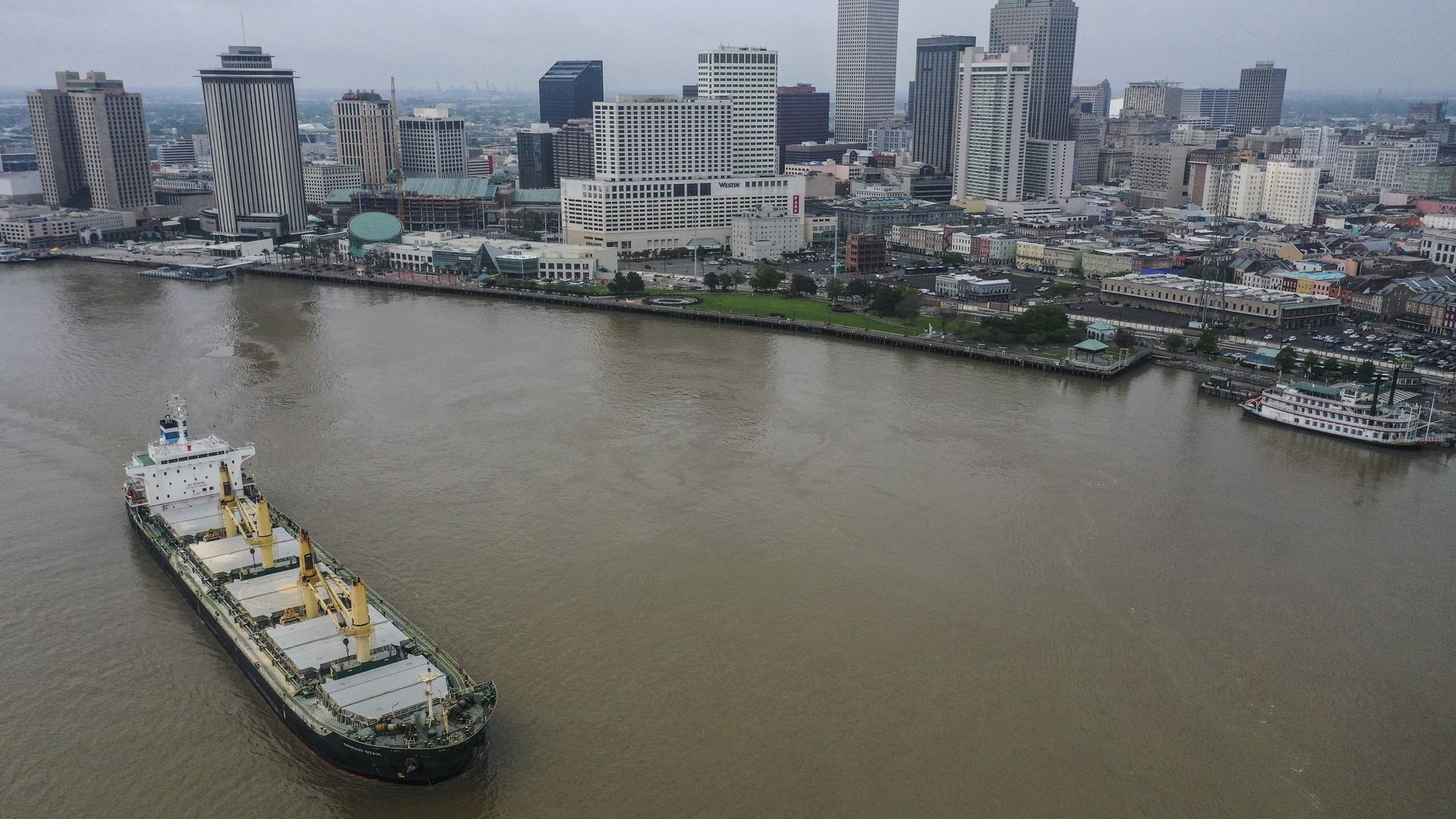
New Orleans gets its drinking water from the Mississippi River. Photo: Ricky Carioti/The Washington Post via Getty Images
Low water levels in the Mississippi River caused by the ongoing drought mean salt water intrusion from the Gulf of Mexico could threaten water supplies as far upriver as the French Quarter.
Why it matters: Salt water intrusion threatening local water supplies used to be a once-in-a-decade concern, but this is the second year in a row low water levels have been an issue.
How it works: Salt water is denser than freshwater, so as the Mississippi River levels drop, a briney "wedge" works its way upriver.
- Local water supplies are pulled from the river, and this wedge of salt water gets in the way.
The latest: Water in the greater New Orleans area has not been impacted by salt water intrusion yet, but about 2,000 Plaquemines Parish residents are unable to drink their tap water because of it, WWNO reports.
- The parish has already distributed 1.5 million gallons of water.
Yes, but: In July, the Army Corps of Engineers installed an underwater levee about 13 miles south of Belle Chasse, which acts as a barrier against the wedge, according to WWNO.
- The Corps plans to raise the levee, called a "sill," while leaving a notch so as not to impede river traffic.
- But even that may not be enough to protect area water if the river level doesn't increase.
- Another option would call for shipping in freshwater to dilute the Mississippi as it reaches New Orleans water facilities.
What they're saying: The New Orleans Sewerage and Water Board is readying for salt water intrusion, should it happen, according to a spokeswoman.
- The utility "will notify customers well in advance of any changes that should be made to their water usage," a Wednesday press release says.
Flashback: The lowest river levels on record occurred in 1988, WWNO reports.
- That year, the salt water wedge went as far upriver as Kenner.
What we're watching: Whether it rains in the local area isn't the issue; rain upriver makes the biggest impact.
- Without enough rain to raise the river's water level, salt water could reach the New Orleans area by late October, according to WDSU.

Get more local stories in your inbox with Axios New Orleans.
More New Orleans stories
No stories could be found

Get a free daily digest of the most important news in your backyard with Axios New Orleans.
